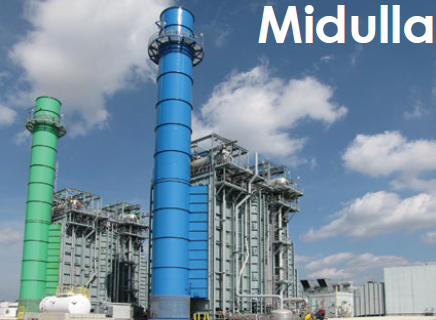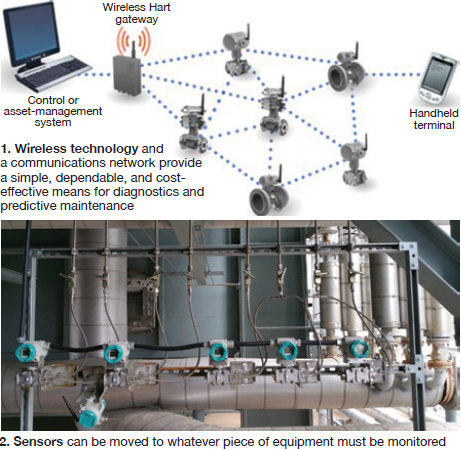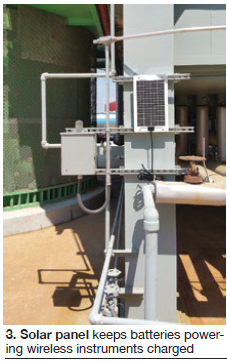Wireless technology benefits plant operations, management

Challenge. Staff faced several challenges at Midulla, including these:
- Integrating digital technologies at the legacy powerplant to improve its operation and management.
- Concerns with vibrations in a pump that could lead to outages.
- Upgrading the quality of operational data received from heat-recovery steam generators. Although equipped with critical instrumentation to support safe operation of the plant and to monitor performance, HRSG data relating to degraded flow, potentially associated with tube fouling, is not a standard data feed to the control room.
These challenges created a need to establish a complementary network for gathering important data from balance-of-plant (BOP) equipment and make it available to the control room and plant personnel for evaluation and early diagnosis of potential issues.
Solution. Plant partnered with Siemens Energy to use state-of-the-art wireless technology for improving plant operations and management. In close collaboration with Midulla maintenance management, the OEM identified key areas where additional data streams would allow plant personnel to evaluate and proactively troubleshoot operational anomalies in BOP equipment. After thorough evaluation of wireless sensor technologies, and development of a reliable network for data transmission and its integration with the site’s SPPA-T3000 control system, the solution was dispatched and verified by site operating personnel.
Siemens’ system uses wireless technology and a communications network (Fig 1) to provide a simple, dependable, and cost-effective means for diagnostics and predictive maintenance. Wireless sensors allow Midulla to capture the measurements needed for equipment analysis. These data are transmitted through an access point (a/k/a “gateway”), and on to the control room, as well as to the Siemens Power Diagnostics® Services facility in Orlando. Last offers an avenue for Siemens to assist in troubleshooting problematic readings.

Results. The wireless solution provided the capability to monitor both standard and non-standard measurements for broadest applicability. For example, to address a recurring site nuisance issue, vibration sensors were placed on the boiler feed pump to assess changes in local vibration that could provide insight for future maintenance planning.
Another application, using wireless differential-pressure transmitters, allows Midulla to gather data regarding HRSG performance and degradation over time. This information is critical to understanding the overall plant performance and offers insight for management to scope out upcoming maintenance activities. Also, it enables early identification of potentially time consuming and costly equipment issues.
 Another valuable aspect of Midulla’s wireless system is the ability to move sensors to whatever piece of equipment that might need monitoring, streaming important data to plant personnel for data-driven decisions (Fig 2). The technology has exponential growth capabilities, with the possibility of expanding the number of sensors used to monitor the overall performance of the plant instead of just one piece of equipment at a time.
Another valuable aspect of Midulla’s wireless system is the ability to move sensors to whatever piece of equipment that might need monitoring, streaming important data to plant personnel for data-driven decisions (Fig 2). The technology has exponential growth capabilities, with the possibility of expanding the number of sensors used to monitor the overall performance of the plant instead of just one piece of equipment at a time.
In addition to creating a valuable stream of actionable data, Siemens Wireless Technology made use of a renewable energy source to power the system. A solar panel was installed on the site next to the pressure transducer’s junction box (Fig 3). The solar panel maintains the two 24-V batteries that power the pressure transmitters.
In sum, wireless technology has proven to be a secure, reliable, and simple solution, one providing valuable benefits compared with wired counterparts. Beyond ease-of-use, it allows for the expansion of usable data streams without the need to install and maintain permanent instrumentation on the vast array of BOP equipment. It also increases access to remote areas and is adaptable for use in many different situations. Above all, it helps prevent unplanned outages and maintenance-cost overruns.
Project participants:
Thomas Holland, maintenance manager
Jason Hicks, shift supervisor
Sean Colley, maintenance supervisor
James Woodall, plant manager
Bill Conley, operations manager
Midulla Generating Station
Seminole Electric Cooperative Inc
810 MW, dual-fuel 2 x 1 combined cycle and five dual-fuel simple-cycle peakers located in Bowling Green, Fla.
Plant manager: James Woodall



